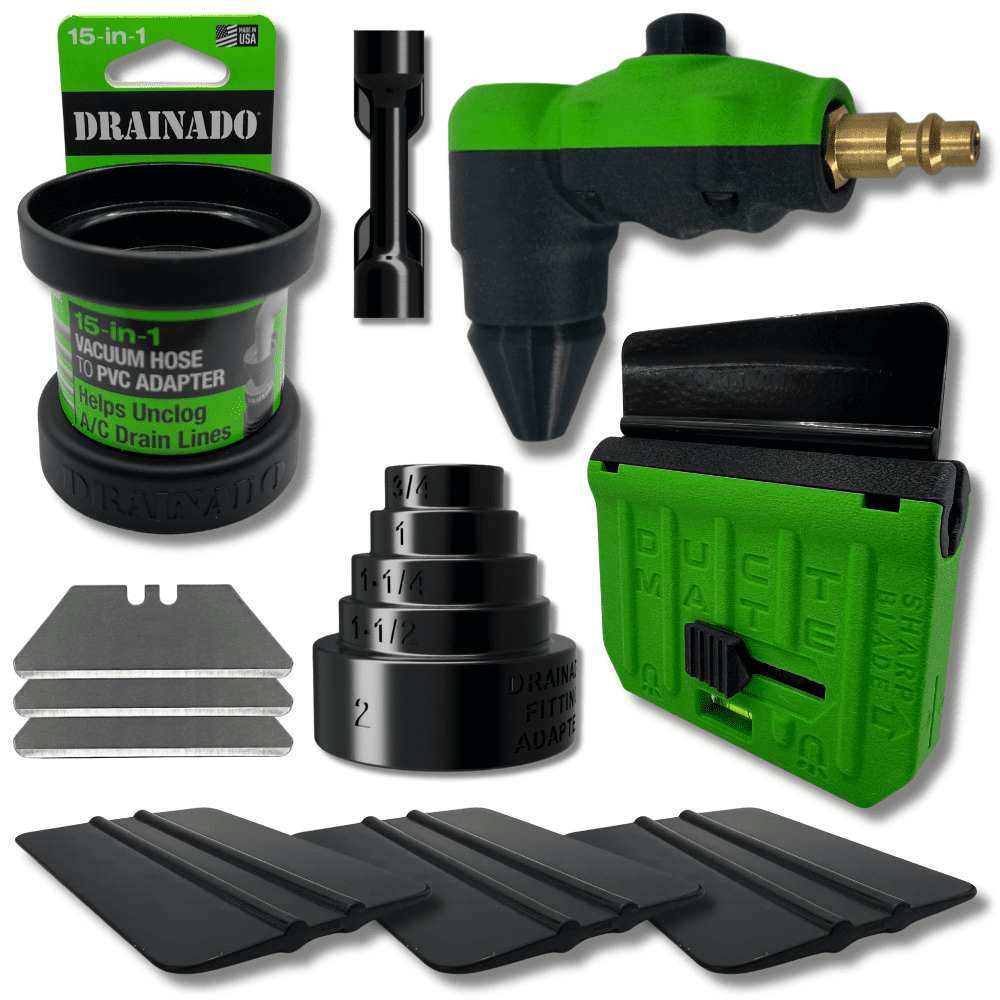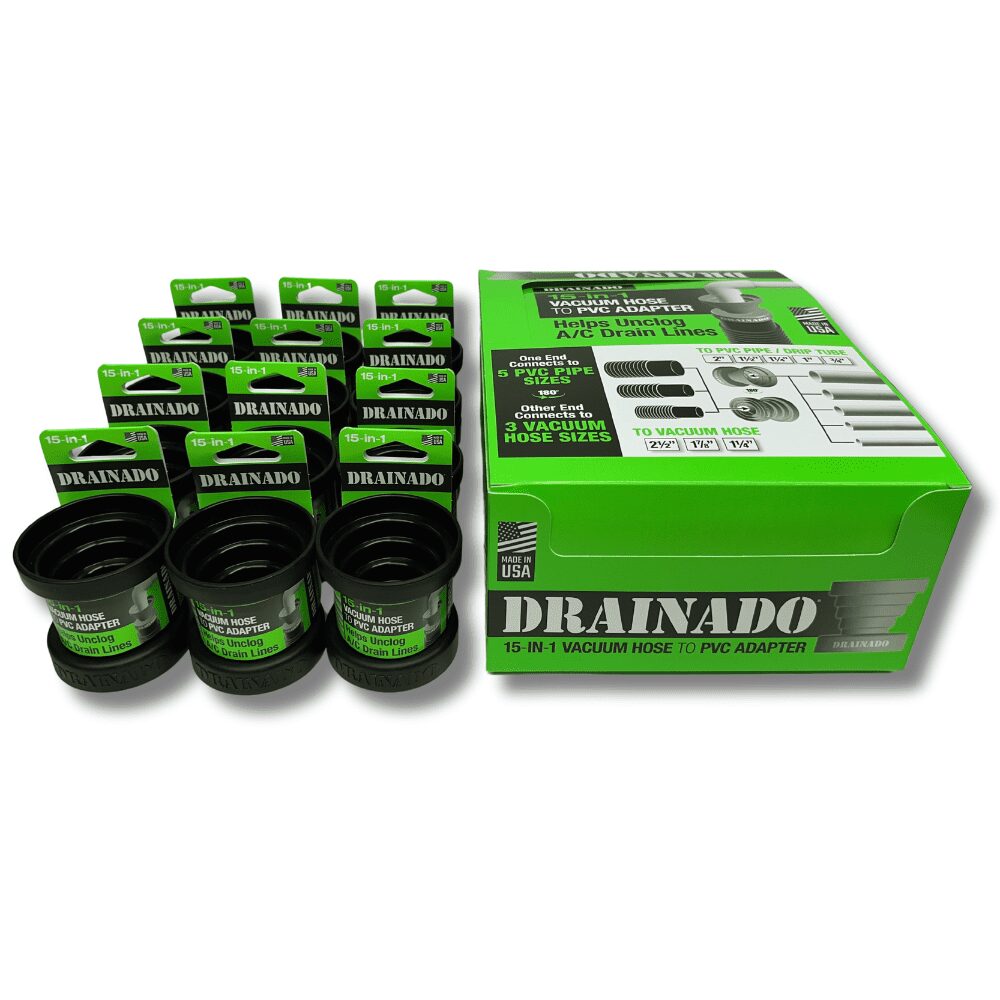In the fast-paced and highly competitive world of HVAC, efficiency is key. The right tools can make all the difference, not just in getting the job done, but in getting it done right. If you’re a professional in the market for the best HVAC tools, this guide is for you. We’ll introduce you to the best tools available, explain their benefits, and show you how to choose the right ones for your needs.
High-quality HVAC tools are essential for anyone in the HVAC industry. They ensure accurate diagnostics, efficient repairs, and reliable installations, all of which lead to satisfied customers and a thriving business. Without the right tools, even the most skilled technicians can struggle to deliver quality service.
With advancements in technology, HVAC tools have become more sophisticated, offering features that were unimaginable a few years ago. These tools not only enhance the quality of work but also significantly improve efficiency, saving time and reducing the likelihood of errors.
Investing in high-quality HVAC tools is an investment in your business. It shows a commitment to providing the best possible service and staying ahead of the competition. Not only will these tools make your job easier, but they also have the potential to increase your profitability in the long run.

Airflow Measurement Tools
Airflow measurement tools are crucial for diagnosing and optimizing HVAC systems. They help ensure that systems are balanced and operating efficiently. Commonly used tools include anemometers and flow hoods, which measure air velocity and volume, respectively.
Anemometers, for instance, are handheld devices that provide quick and accurate readings of airspeed. This data is essential for balancing air distribution in HVAC systems, leading to better performance and energy savings.
Flow hoods, on the other hand, are used to measure the volume of air flowing through ducts and vents. They help technicians identify blockages and inefficiencies, ensuring that the system delivers the right amount of air to each room.
Leak Detection Tools
Leaks in HVAC systems can lead to significant energy losses and higher operating costs. Leak detection tools, such as electronic leak detectors and ultrasonic leak detectors, are designed to pinpoint leaks quickly and accurately.
Electronic leak detectors use sensors to detect refrigerant leaks by picking up the presence of gas. These detectors are highly sensitive and can find even the smallest leaks, preventing costly energy losses and potential damage to the system.
Ultrasonic leak detectors, meanwhile, use sound waves to detect leaks. They are particularly useful for finding leaks in hard-to-reach areas or in systems that are under pressure. By identifying leaks early, technicians can prevent more serious issues down the line.
Temperature and Humidity Sensors
Temperature and humidity sensors are essential for maintaining indoor air quality and comfort. These sensors provide real-time data that helps technicians adjust HVAC systems to optimal settings.
Digital thermometers and hygrometers are commonly used to measure temperature and humidity levels. These tools are precise and easy to use, making them invaluable for diagnosing and troubleshooting HVAC systems.
Wireless sensors offer additional convenience, allowing technicians to monitor conditions remotely. These sensors can be integrated with smart HVAC control systems, providing continuous data and alerts for any deviations from desired settings.
Smart HVAC Control Systems
Smart HVAC control systems are revolutionizing the HVAC industry. These systems use advanced algorithms and real-time data to optimize performance, reduce energy consumption, and improve indoor air quality.
Smart thermostats, for example, learn user preferences and adjust settings automatically. They can be controlled remotely via smartphone apps, providing convenience and energy savings.
Building management systems (BMS) offer even greater capabilities, integrating HVAC controls with other building systems. This holistic approach enhances overall efficiency and provides valuable insights into system performance.
Drain Clearing Tools
Clogged drains can cause significant issues in HVAC systems, leading to water damage and reduced efficiency. Drain clearing tools, such as the 1nv3nt Drainado, are designed to quickly and effectively clear blockages.
The 1nv3nt Drainado is a powerful tool that uses high-pressure air to dislodge clogs. Its compact design and ease of use make it a favorite among HVAC professionals. By keeping drains clear, technicians can prevent water damage and ensure optimal system performance.
Increased Energy Efficiency
Using high-quality HVAC tools can significantly increase energy efficiency. Accurate diagnostics and adjustments ensure that systems operate at peak performance, reducing energy consumption and lowering utility bills.
For example, airflow measurement tools help balance air distribution, preventing overworking of the system. Leak detection tools identify and fix leaks, preventing energy losses. Smart HVAC control systems optimize settings, reducing unnecessary energy use.
Reduced Maintenance Costs
Investing in the best HVAC tools can lead to reduced maintenance costs. Early detection of issues, accurate diagnostics, and efficient repairs prevent costly breakdowns and extend the lifespan of HVAC systems.
Temperature and humidity sensors, for instance, provide real-time data that helps technicians address issues before they become major problems. Drain-clearing tools prevent clogs and water damage, reducing the need for expensive repairs.
Improved Indoor Air Quality
High-quality HVAC tools contribute to improved indoor air quality, which is essential for comfort and health. Properly maintained systems provide consistent temperature and humidity levels, reducing the risk of mold growth and allergens.
Smart HVAC control systems monitor and adjust settings continuously, ensuring optimal indoor air quality. Temperature and humidity sensors provide accurate data for fine-tuning systems, and maintaining a healthy indoor environment.

Selecting the right HVAC tools requires careful consideration of your specific requirements and the types of systems you work with. Start by assessing the types of tasks you perform most frequently—whether it’s installation, maintenance, or troubleshooting—and identify which tools are essential for those operations. Additionally, consider the following factors:
While selecting HVAC tools is crucial for effective operation and maintenance, certain common mistakes can hinder your success. Avoiding these pitfalls can enhance your efficiency and ensure a smoother workflow in your HVAC tasks.
Investing in the best HVAC tools can bring numerous benefits to your business, including increased energy efficiency, reduced maintenance costs, and improved indoor air quality. By carefully considering your specific needs and avoiding common mistakes when choosing tools, you can enhance your efficiency and ensure optimal system performance for years to come. So don’t just settle for any tool – choose the best HVAC tools for your trade today!
Drainado
10650 London St, Hollywood, FL 33026, USA
https://www.google.com/maps?cid=7755870468674027141
info@drainado.com
https://drainado.com/
The Importance of Proper Drain Pipe Maintenance Have you noticed your sink draining slower than
How a Shop Vac Can Simplify Your Cleanup Routine Cleaning up messes, whether in your
Dust, Debris, and Clean-Up Made Effortless with Shop Vacuum Dust and debris seem to have
Clog-Free Living Made Easy with the Right Condensate Drain Cleaner Your home’s HVAC system works
Troubleshooting A/C Drain Line Issues: Tool to Blow Out AC Drain Line In the realm
Common Problems with HVAC Drain Pipe and How to Solve Them In the labyrinth of